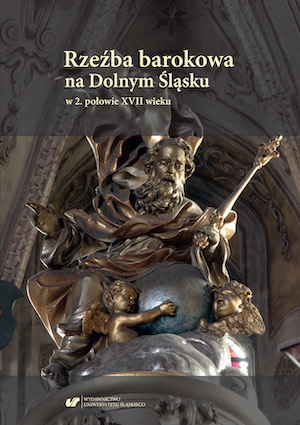Ołtarz św. Marii Magdaleny w kolegiacie głogowskiej – historia i próba rekonstrukcji
The altar of St. Mary Magdalene in the Głogów Collegiate Church – its history and an attempt at reconstruction
Author(s): Dariusz Galewski, Jakub Szajt
Subject(s): Fine Arts / Performing Arts, Visual Arts, History of Art
Published by: Wydawnictwo Uniwersytetu Śląskiego
Summary/Abstract: The altar of St. Mary Magdalene was funded by the Głogów canon Gottfried Jakob Urban Schönborn around 1697, as is suggested by the text of an ecclesiastical visitation document. It was located in the Collegiate Chapel of St. Mary Magdalene until 1945, when it was destroyed during the war. Its surviving elements were placed in the church after the war, encouraging attempts to reconstruct the work, using its existing remains.
The altar was made of grey Silesian marble from Przeworno and white marble, probably from Supíkovice. Below the altar stone was a socle with an oval cartouche, flanked by two pedestals on which stood statues of James the Elder and St. Urban the pope. Between them a rectangular framework with a semicircular ending held a low relief depicting penitent Mary Magdalene kneeling at the entrance to a grotto, holding a cross in her right hand and leaning her left hand on a skull. The composition was framed by volutes with protruding acanthus leaves on which sat putto figures holding the founder’s coat of arms; above there was a sculpture representing St. Godfrey of Cappenberg. A cartouche placed before the altar stone held an inscription commemorating the founder. The iconography of the reredos highlighted the idea of conversion and penitence, as is evidenced by the representation of Mary Magdalene, who placed all her hopes for absolution of her sins in the cross. What was also important was her special role of intercession expressed in the cartouche.
The form of the altar is without architectural elements, which in the late 17th and early 18th century was rare in Silesia. The Głogów reredos can be compared only to the 1694 altar of the Holy Family in the Chapel of St. Ivo and Holy Family in the Church of Our Lady on the Sand Island in Wrocław. The author of the Głogów piece is not known – he may have been a member of the workshop or collaborator of another sculptor who came, hypothetically, from the Southern Netherlands, and made the pulpit in the Collegiate Church according to models characteristic of Flanders.
Book: Rzeźba barokowa na Dolnym Śląsku w 2. połowie XVII wieku
- Page Range: 59-69
- Page Count: 12
- Publication Year: 2020
- Language: Polish
- Content File-PDF

